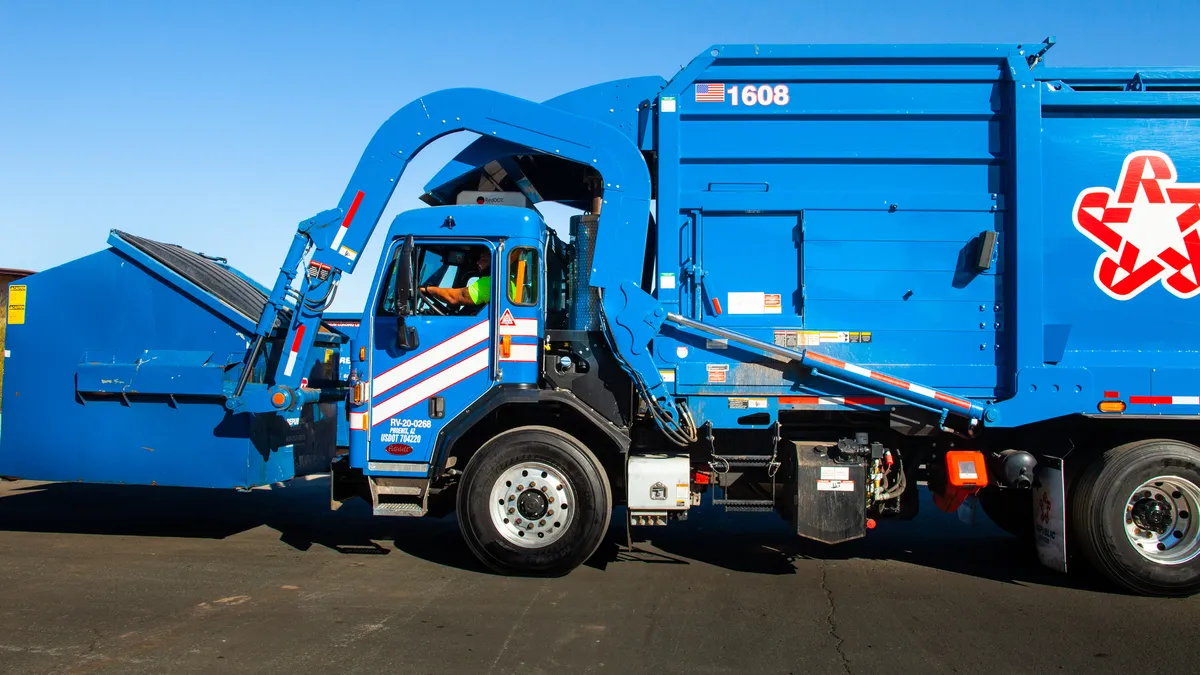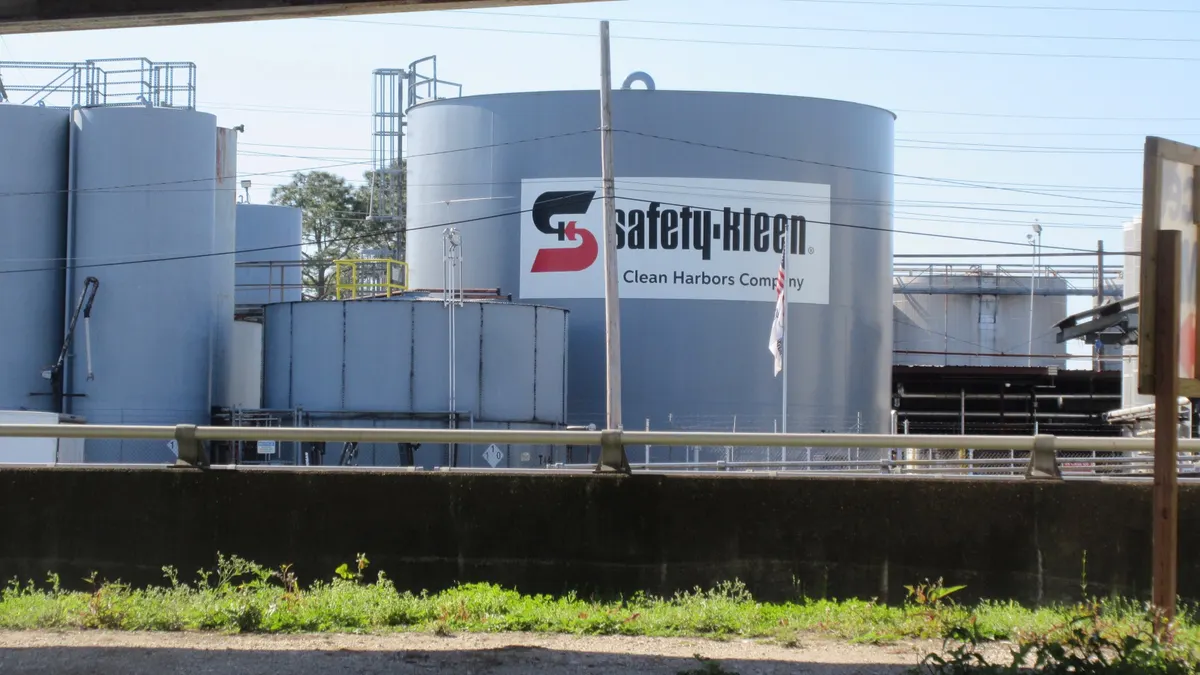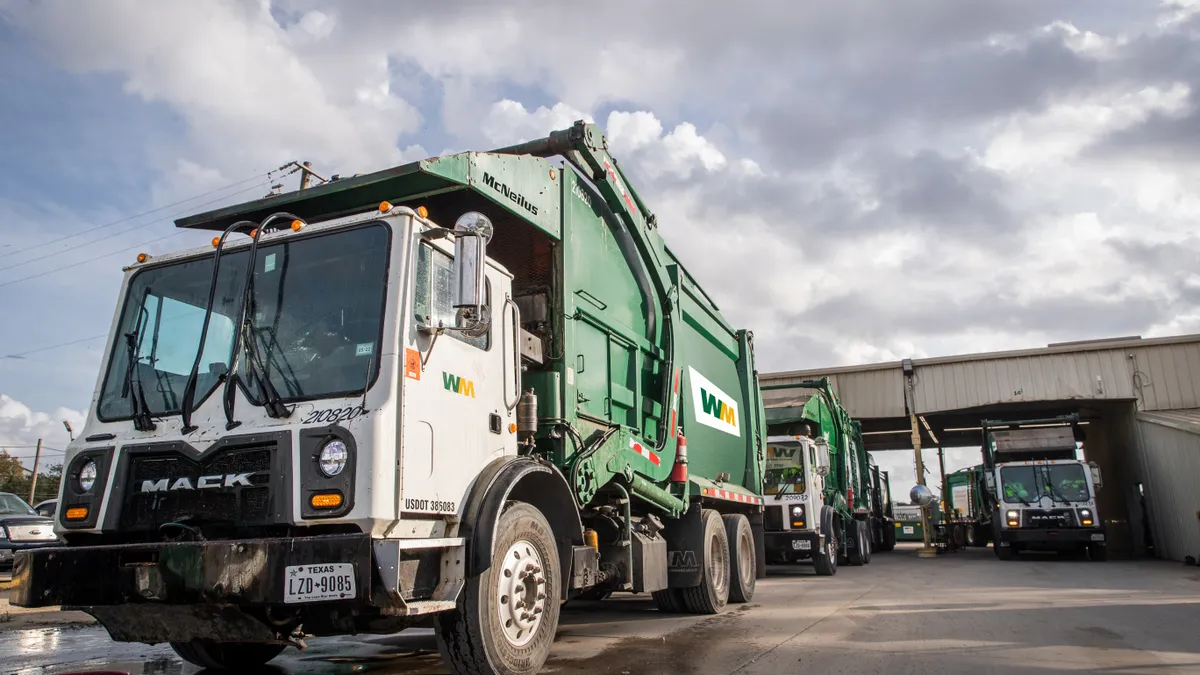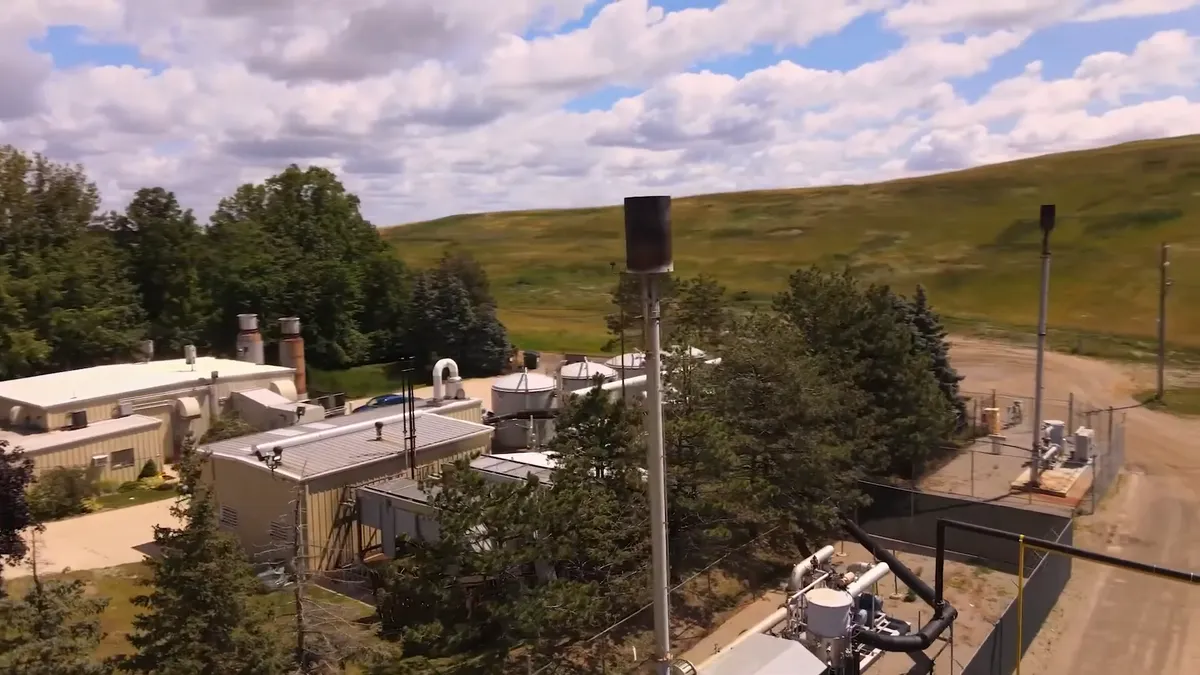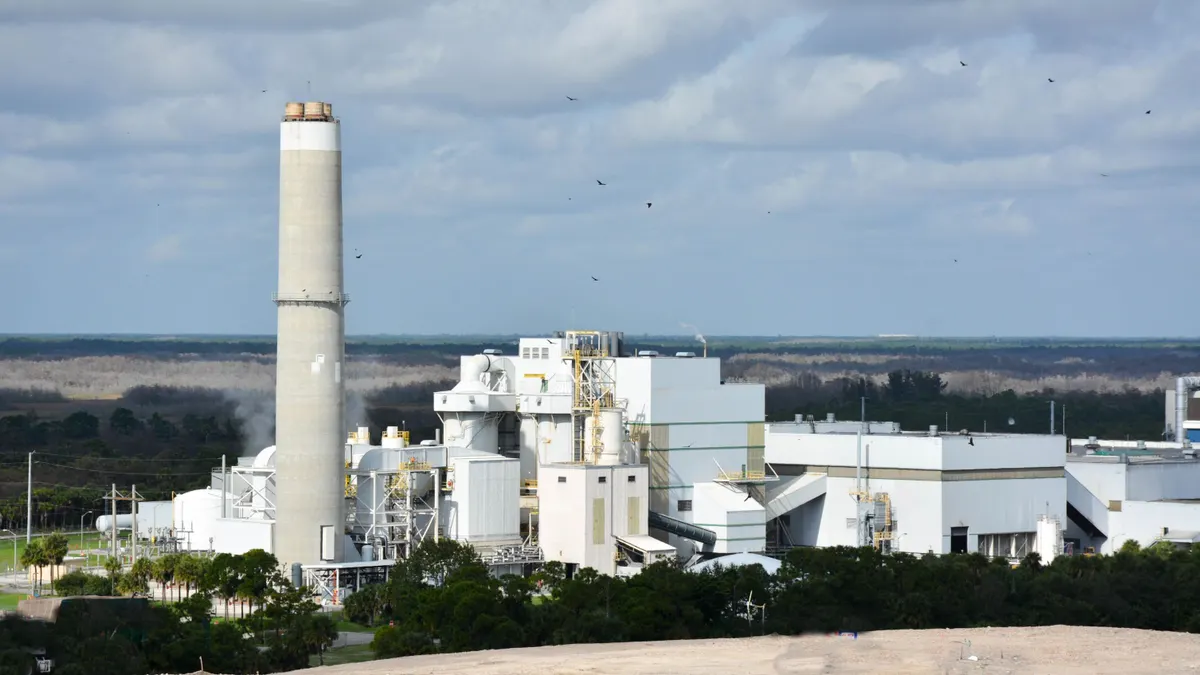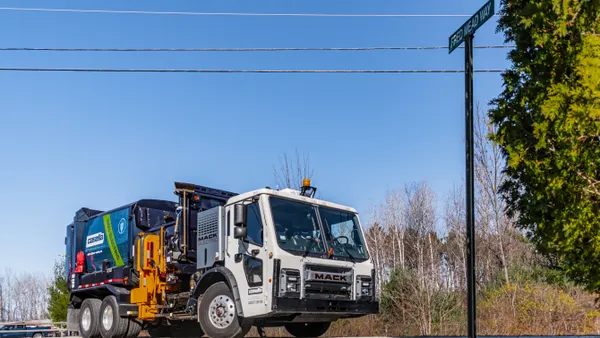As zero waste and sustainability goals become bigger priorities across the industry, waste-to-energy companies are looking to position themselves as the solution.
New Jersey-based Covanta remains one of the largest in the field, now processing an estimated 20 million tons of waste at 41 facilities in North America and Europe. Covanta was recently named to the "Clean 200" list of companies working with alternative energy and is expanding its efforts to recover more value from metals and other materials. Yet less than 10% of waste in the U.S. is currently processed through combustion or other energy recovery methods and the climate for new facilities remains difficult.
Waste Dive spoke with Stephen Jones, Covanta's president and CEO, at the bi-annual meeting of the Waste-to-Energy Research and Technology Council in New York to learn more about what is next for the company.
Editor's note: This conversation has been edited and condensed for clarity.
WASTE DIVE: Covanta had planned to cease operations at a facility in Pittsfield, MA due to economic factors, but may continue now because of local subsidies and a state tax credit. Is that something you'd like to see more of in other states?
STEPHEN JONES: I'm not a big fan of businesses being built on subsidies with power prices being awfully low these days. Because the U.S. is blessed by lots of natural gas and that's driving down power pricing. It is nice to get credits in some cases. If you look at some of the other renewables they get a lot of subsidies and energy-from-waste (EFW) doesn't really play at that level from a subsidy standpoint, so it's helpful. Particularly in this case because the plant's smaller, it's a little older, the economics are challenged. We're hopeful that everything will get wrapped up and we'll be able to continue to operate. We'd love to continue to operate.
What potential do you see for new waste-to-energy facilities in the U.S.?
JONES: In the U.S. you're probably going to see expansions more than new greenfields. That's easier to do than to do a new development on a greenfield site. It seems to me like municipalities are looking at their solid waste plans and it just seems to be a little bit more interest now than previously on what communities are going to do. These are some of our existing communities that we work with. And it feels like they're looking at their solid waste plans and thinking about whether they need to expand their EFW facilities.
California's governor recently signed multiple laws aimed at reducing methane and greenhouse gas emissions. Does that open up business opportunities? Could similar legislation be helpful to EFW in other states?
JONES: If you look at environmentally-driven businesses, or changes to business, California is usually on the leading edge of that, and not so much at this point [on EFW]. It's surprising to us that tipping fees aren't higher because power prices are higher in California. You need a combination of higher tipping fees, higher power fees to make it work, and metal prices to be at a certain level.
If you could reduce capital costs that would solve the issue. How do we get our capital costs down? How do we get more out of the energy that we produce? Can you sell steam around the plant? That's more valuable right now in some geographies than actual power being produced. One of the things we're doing around tipping fees is [taking] in more special or profile waste.
What has been driving this interest in profile waste?
JONES: You have a lot of companies who have sustainability goals. 80% of the S&P 500 has sustainability goals. Most of them have a zero waste-to-landfill goals. Well that's driving our business and those companies are willing to pay more for the disposal in order for it to be sustainable. They're not going to pay a lot more, but a little bit more in order to be more sustainable.
[The pharmaceutical companies] don't want their out-of-spec medication going into a landfill. You have that with certain governmental entities and some of their papers. You have it with some of the clothing companies. They want assured destruction.
This makes sense for corporations, but can local governments afford to pay more if they're bound by budgetary responsibilities?
JONES: We're looking at [that] now with this profile waste and steam and [bringing] capital costs down. What's the new equation around an EFW plant? Can we start to reinvigorate construction of new EFW plants here in the U.S.?
On the East Coast, because the population goes in a little further, you're kind of landlocked. If you look at Long Island [NY], where we have a number of plants, they don't have many options. For them to get their waste off Long Island, with the traffic congestion and rail congestion, it's hard. So that's what's driving some of these folks to say, "Okay, we've got to start thinking about population [growth]. What are we going to do as more people are living in our jurisdictions?"
Do you think cities can achieve zero waste without using EFW?
JONES: I think that's challenging. That's tough to do. There are just some things that are really difficult to recycle. Our view is you should at least recover the BTU content. There's hydrocarbons in there. You should get the BTU content and recover the energy from that waste that can't be recycled.
Public opinion is still against EFW in some parts of the country. How is Covanta working to change that?
JONES: That's probably one of our bigger challenges ... is trying to explain to people that 40% of the capital on these plants goes to the air pollution control systems. We spend a lot of time, energy, money. We've got a lot of experts around the pollution control part of the plant. And that's a big focus of ours because of the history of what happened [decades ago].
We try to do a lot with schools to get the next generation to understand that there's a more sustainable way to handle waste rather than a landfill. And quite frankly, the greenhouse gas impact from landfills is starting to get some traction. So I think you're starting to some movement there, or some realization that we've got to get our hands around methane because it is a particularly bad greenhouse gas.
What are Covanta's upcoming regulatory priorities?
JONES: We're watching closely what happens with the Clean Power Plan. Now that's going to go on for a while because it probably gets litigated. Then it's more what's happening at the various state levels. We're primarily focused on the East Coast of the U.S. So we're working with some of the local officials, state officials on talking to them about what their municipal solid waste plans are, what we can do to help there. It's more of a state focus at this point until the federal Clean Power Plan figures its way to the Supreme Court.
Minnesota’s Hennepin County Board recently voted to switch to another company for operation of the Hennepin Energy Recovery Center in Minneapolis. Will Covanta be contesting this decision?
JONES: We've got a lawsuit pending now. I don't want to say too much about that. We had the right to an extension under the contract. They didn't really negotiate with us. That's been a fun plant to operate, I think we've done a good job there. For a lot of different reasons I think they wanted to go in a different direction. Unfortunately we don't think they adhered to the contract in making some of those decisions.








